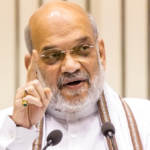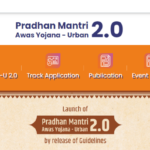Finance Ministry: Should Take Notes from India’s Best Budgets
Here is a list of some of the best budgets for the middle class in India since independence, highlighting their key features and impacts:
- 1997-98 “Dream Budget” by P. Chidambaram
- Key Highlights:
-
- Reduced the highest marginal income tax rate from 40% to 30%.
- Simplified the tax structure.
- Reduced customs duties to 40%.
- Introduced the Voluntary Disclosure of Income Scheme (VDIS).
- Impact: Increased disposable income, more significant savings, affordability of imported goods, and enhanced standard of living and economic growth.
- 1991 Budget by Manmohan Singh
- Key Highlights:
-
- Initiated economic liberalization and ended the License Raj.
- Introduced structural reforms, including opening up to foreign direct investment (FDI) and reducing trade barriers.
- Impact: Long-term economic growth, creation of job opportunities, improved market competitiveness, and increased availability of consumer goods.
- 2000 “Millennium Budget” by Yashwant Sinha
- Key Highlights:
-
- Reduced customs duties on computers and accessories.
- Phased out incentives on software exporters.
- Impact: Growth of the IT industry, new employment opportunities, and increased income levels for the middle class.
- 2019 Budget by Nirmala Sitharaman
- Key Highlights:
-
- Provided total tax rebate for individuals with an annual income up to ₹5 lakh.
- Increased the standard deduction from ₹40,000 to ₹50,000.
- Impact: Direct tax relief for the middle class, higher disposable incomes, and increased savings and investment potential.
- Key Highlights:
-
- Introduced a new tax regime with lower tax rates and reduced deductions.
- Increased deposit insurance from ₹1 lakh to ₹5 lakh.
- Impact: Simplified tax filing, increased financial security for depositors, and higher disposable incomes.
- 2004 Budget by P. Chidambaram
- Key Highlights:
-
- Introduction of the education cess to fund primary education.
- Focused on improving rural infrastructure and employment through schemes like Bharat Nirman.
- Impact: Improved educational facilities, better rural infrastructure, and job creation in rural areas, indirectly benefiting the middle class.
- 2014 Budget by Arun Jaitley
- Key Highlights:
-
- Raised the income tax exemption limit from ₹2 lahks to ₹2.5 lahks for individuals below 60 years and from ₹2.5 lahks to ₹3 lahks for senior citizens.
- Increased the Section 80C deduction limit from ₹1 lakh to ₹1.5 lakh.
- Impact: Increased savings and investments and more disposable income for the middle class.
Conclusion
These budgets have played crucial roles in providing tax relief, boosting disposable income, creating job opportunities, and improving the standard of living for the middle class in India. This has increased savings and investments and given the middle class a sense of financial security.











